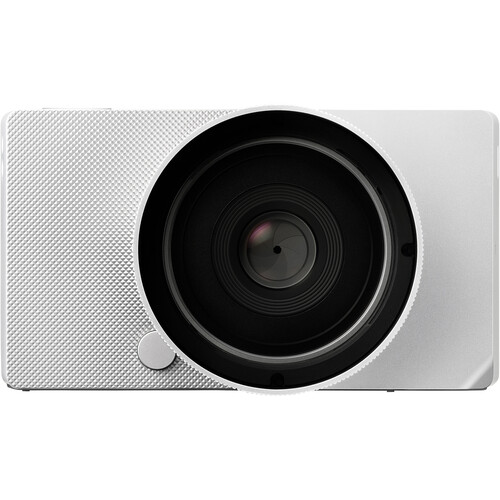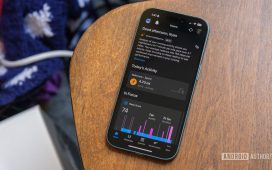The Sigma BF is a beautifully designed camera unlike any other. While testing it for this review, I found the full-frame camera to be as easy to pick up as a point-and-shoot. It’s a pleasure to use — a love letter to minimalism, precision and the pure joy of old-school photography.
With an aluminum unibody worthy of Jony Ive and a stripped-down interface that favors elegance over excess, this full-frame mirrorless marvel feels less like gear and more like art itself.
What it lacks in cutting-edge features, this gorgeous $1,999 camera more than makes up for with soul. And for Apple lovers, photo fans and design purists, that might be all that matters.
Keep reading for my in-depth Sigma BF review (and/or watch my video version).
This post contains affiliate links. Cult of Mac may earn a commission when you use our links to buy items.
Sigma BF review
Beautiful and fun to use
Sigma BF Mirrorless Camera
4.0
This beautiful camera is as easy to use as a consumer point-and-shoot, while its full-frame sensor takes stunning professional photos.
- Gorgeous aluminum design
- Excellent build quality
- Full-frame 24MP sensor
- Simple controls
- Non-flippable screen
- Shaky handheld video
People often describe a product as “Apple-like” if it’s (a) minimalistic, (b) expensive, (c) a bit behind on raw specs and (d) missing a bunch of industry-standard features. The Sigma BF certainly ticks all those boxes. But a more nuanced opinion of Apple might say that a product is Apple-like if it (a) has a straightforward purpose, (b) executes beautifully on that purpose, and (c) does nothing else.
While other high-end cameras layer on the complexity, the Sigma BF stands out as a rare new product that strips things down to the essentials. It’s a work of art as much as it is a piece of equipment — and in that sense, it is just like all the classic Apple products, from the Mac to the iPod.
Table of contents: Sigma BF camera review
- Design
- Controls
- Photo quality
- Video quality
- Missing features and other observations
- Conclusion
- Price
Sigma BF review: Design
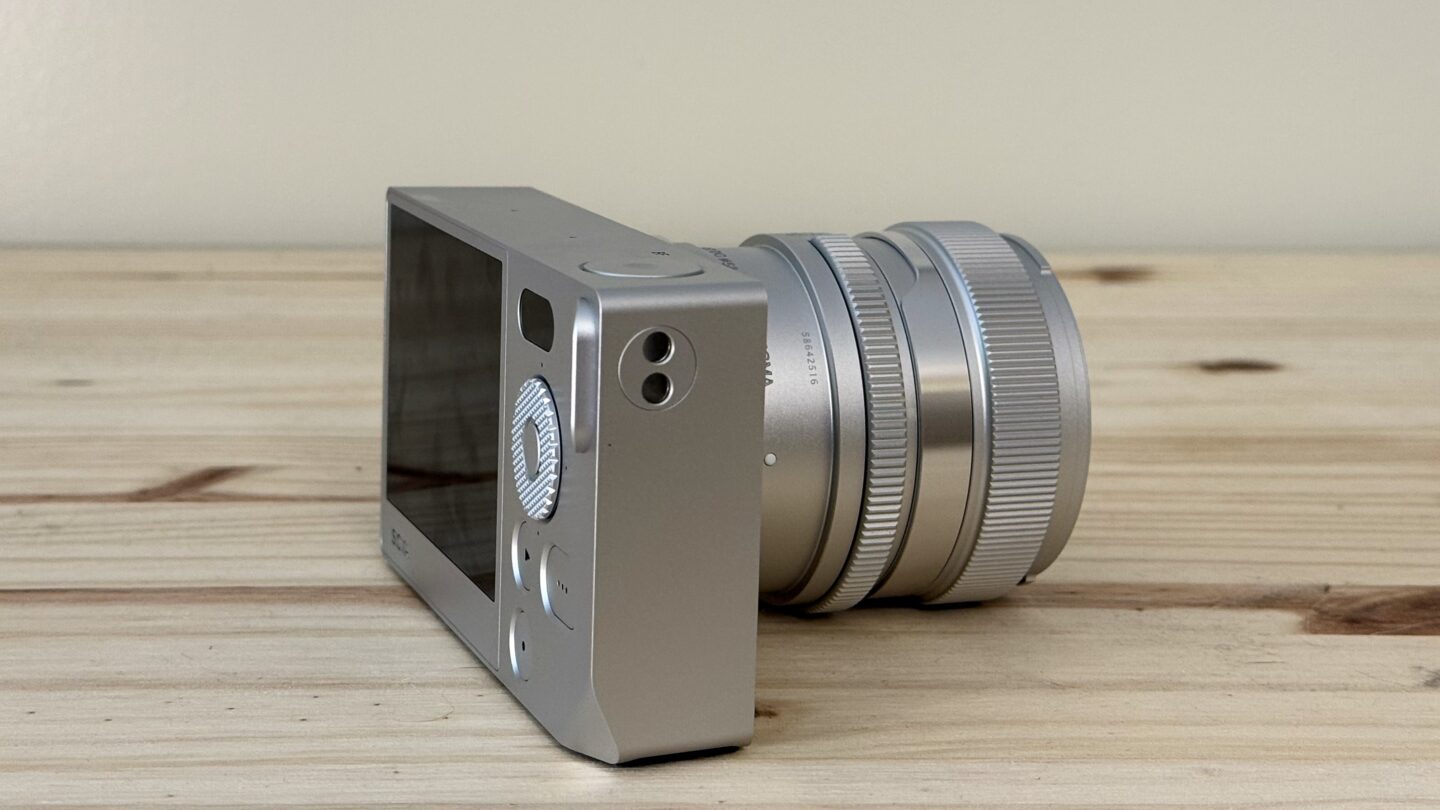
Photo: D. Griffin Jones/Cult of Mac
As mentioned, the Sigma BF is a full-frame camera, meaning its sensor measures 36 mm by 24 mm, the exact same size as a full frame of 35mm film, with an aspect ratio of 3:2. This makes it better at capturing light. Plus, the pixels look sharper than what you get with smaller sensors. It’s mirrorless, so the camera body is somewhat compact, but you’re definitely not fitting this into a pocket, because it requires an attachable lens.
The look and feel of the camera is what captured the attention of Apple fans. Its solid aluminum unibody looks like it was designed by Jony Ive. It’s milled from a single block of metal, and you can count the number of seams with your fingers — even if you only have three fingers.
One side of the camera’s front is textured with a diamond pattern for grip. A few different surfaces are brushed rather than sand-blasted, with beveled edges around the buttons, to break up the look.
Ergonomics and build quality
There Sigma BF’s designers made three affordances for ergonomics: a notch in the bottom-right corner for your palm, a thumb scoop to boost your grip, and sides that taper in slightly. The front is flat; there’s no protrusion to wrap your other fingers around, but it’s still comfortable to hold. The full package is a touch heavy for one hand, so I brace it underneath with my left hand (which also allows control of the aperture and focus).
The build quality, as you may expect, is absolutely immaculate. The tactile feeling of the buttons, the aperture, the focus, the Automatic/Manual switch — all are solid and clicky. Notches on all the moving parts and dials line up perfectly every time. Nothing wobbles. Nothing is cheap plastic.
I have absolutely no reason to detach and reattach the lens, because it’s the only one that came with my Sigma BF review unit. And even though I struggled to get the lens on the first time, I find myself taking it off and putting it back on simply because it feels so mechanical and so satisfying to click together. The release button is springy when you hold it down; the lens snaps into place with a weight that tells you it’s secure.
Controls and buttons
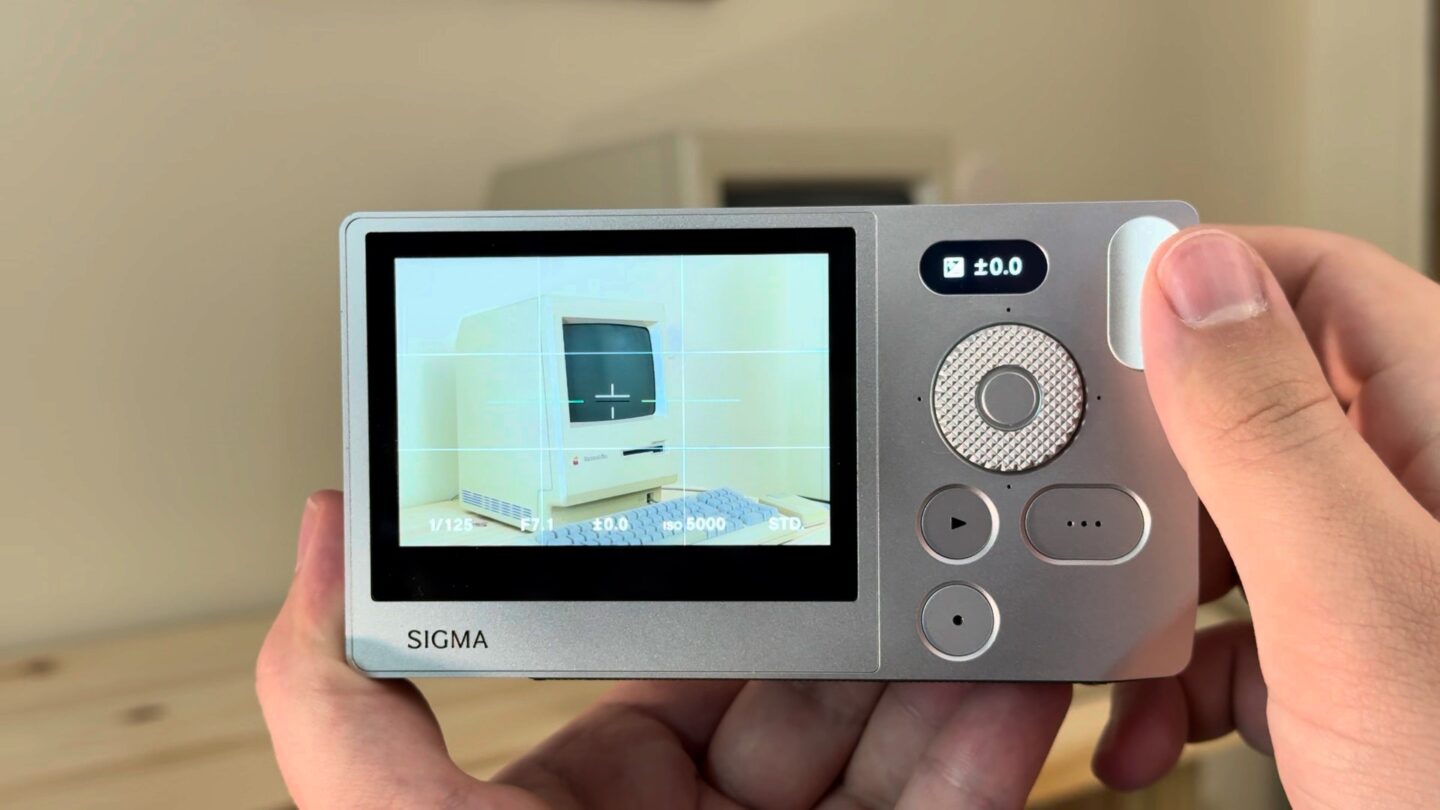
Photo: D. Griffin Jones/Cult of Mac
After just two weeks with the Sigma BF, every other camera looks like a labyrinthian puzzle box of inscrutable knobs and meaningless buttons. Say what you will about the staunch minimalism and expensive CNC-milled design — every camera should work like this.
Sigma didn’t send me a manual, but the controls — both physical and on-screen — are intuitive enough to figure out naturally
Sigma BF controls and what they do
- The dot button on the bottom turns the camera on and off.
- The play button switches between capturing and playback. You can hold your finger on the button (without clicking it) to get an instant preview of the last photo you took.
- The ⋯ button adjusts interface settings, like gridlines, volume, brightness and on-screen displays.
- The dial spins around like an iPod clickwheel, clicks in all four directions, and clicks in as a button. This adjusts your shooting settings. You can set the dial to have easy access to adjusting exposure, ISO, shutter speed, digital zoom and more.
- The screen itself is also a touchscreen, so you can tap it to change focus. Unfortunately, some of the on-screen controls are tappable, but not all, which is a little confusing. Regardless, the on-screen UI is incredibly intuitive and largely stays out of your way.
- The secondary status display shows extra information relevant to the context. It shows the exposure in shooting mode, battery percentage while you’re charging, the number of items in playback mode, and more. Usually, whatever it’s showing is what changes when you spin the dial.
Aside from the power button and the shutter button, the controls are pressure-sensitive and solid state with haptic feedback. They’re incredibly well done.
You might worry that solid-state buttons won’t work when wearing gloves. But because they’re pressure-sensitive, not capacitive like your smartphone, they responded to everything I tested them with — even through a thick blanket or with a nonconductive piece of plastic.
Sigma BF review: Photo quality

Photo: D. Griffin Jones/Cult of Mac
A review of the Sigma BF’s picture quality shows it produces phenomenal images. 24MP on a full-frame camera isn’t the highest resolution — other full-frame cameras go up to 40MP — but the trade-off is that the images look incredibly sharp and the low-light performance is fantastic.

Photo: D. Griffin Jones/Cult of Mac
The Sigma BF uses L-mount lenses, which are manufactured by Sigma, Panasonic, Leica and Samyang. Sigma sent me, of course, a Sigma 50mm prime lens. Prime lenses don’t zoom, but the 50mm focal length is a sweet spot for natural photography and portraits — although it’s much too close for taking selfies. The minimum focus distance is also a rather long 18 inches.

Photo: D. Griffin Jones/Cult of Mac
The Sigma BF’s full-frame sensor means its performance in the dark is not only far and away superior to every smartphone, it doesn’t need any computational photography or processing trickery. My house has very terrible lighting. It’s pretty shaded, so most windows don’t let in much light, and many rooms have no built-in lighting. During testing for my review, I found the Sigma BF can capture images in the late evening with virtually no visible grain. This would only be possible at peak daylight hours on my iPhone.
Lack of HDR means you must think before you shoot
On the downside, it doesn’t support HDR (high dynamic range). That means indoor pictures taken against a window will suffer from a blown-out background. While the full-frame sensor proves great at capturing light, the lack of any computational photography means you must consider the dynamic range as you frame your shot. Apple aggressively processes iPhone images so you never need to think about it.

Photo: D. Griffin Jones/Cult of Mac
The Sigma BF’s RAW photos take up roughly three times the space as JPEGs. You can shoot combined RAW + JPEG, and Apple Photos will import both as a single, combined image. It’s easy to switch from JPEG to RAW, and use the built-in editing interface to fine-tune the image. Unfortunately, for those photos where the JPEG is good enough and you’d rather save space, there’s still no easy way to discard the RAW part of the image. (But that’s not Sigma’s fault.)
Sigma BF review: Video quality
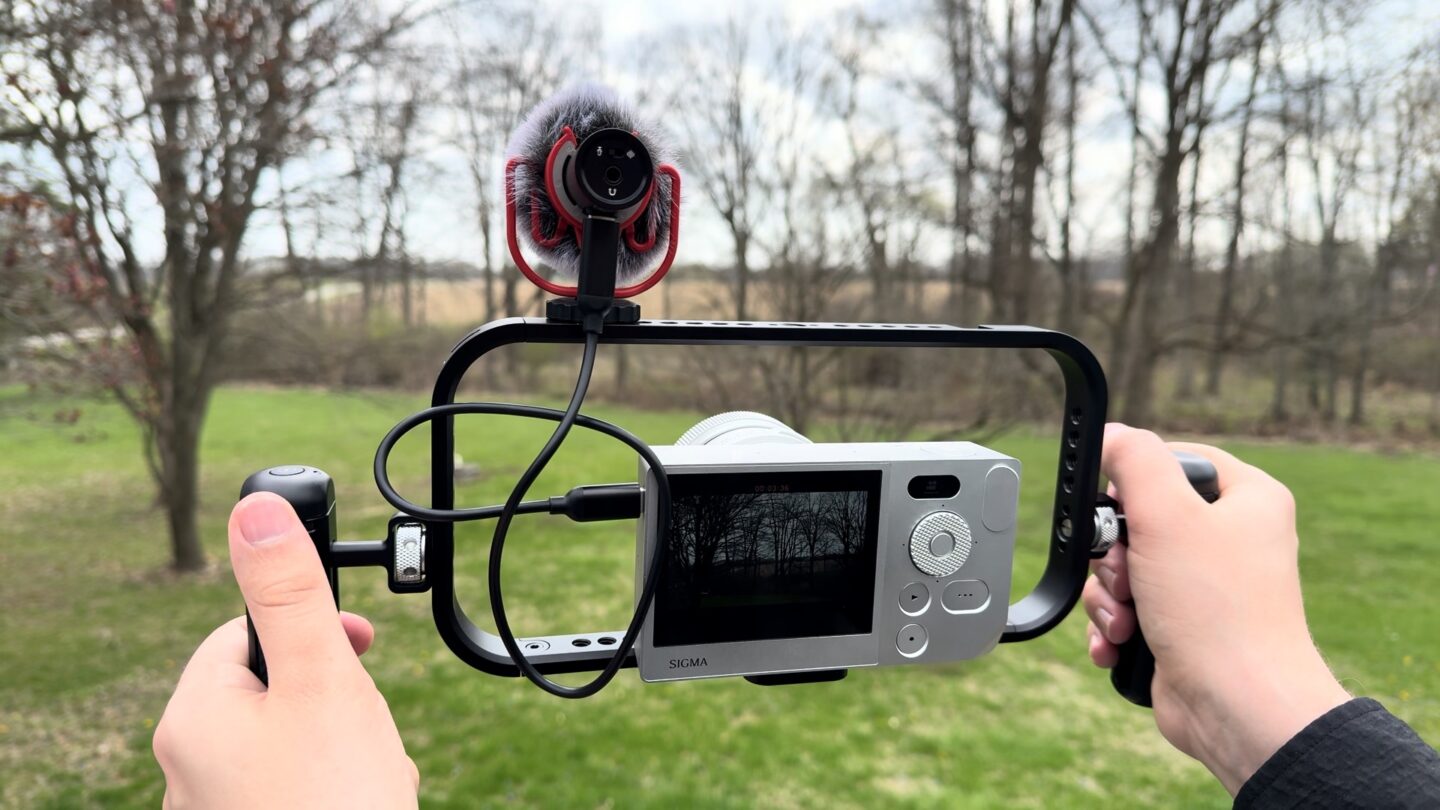
Photo: D. Griffin Jones/Cult of Mac
The Sigma BF is a photography camera first and foremost. The video quality is impressive, but you’ll only want to use it on a tripod. This is not an action camera or a vlogging camera.
The first clue is that there’s no top-level button to switch between photo and video — video capture is a mode in a menu that takes five button clicks to activate. It can capture 4K and even 6K video up to 29.97 fps, or 1080p video up to 119.88 fps.
The continuous autofocus works pretty well. It automatically (and pretty reliably) detects humans, dogs and cats. But it struggles to track fast-moving objects — that’s one advantage of the iPhone, as the pro models pack a LiDAR sensor.
The Sigma BF offers no optical or sensor-shift image stabilization, either — only digital. I shot some handheld video with the camera mounted in a Moment Filmmaker Cage. And even with added grips on the side, the video looked a little too shaky for comfort. But shooting in 6K gives you the wiggle room to stabilize the video later in Final Cut Pro without sacrificing resolution.
The camera’s two built-in microphones work OK. But without any way to plug in or mount a windscreen, the device’s ability to capture high-quality audio remains somewhat limited.
The fixed display and the 50mm lens are two more clues that this is a camera you set up and stand behind, not hold in front of you.
Missing features and other observations
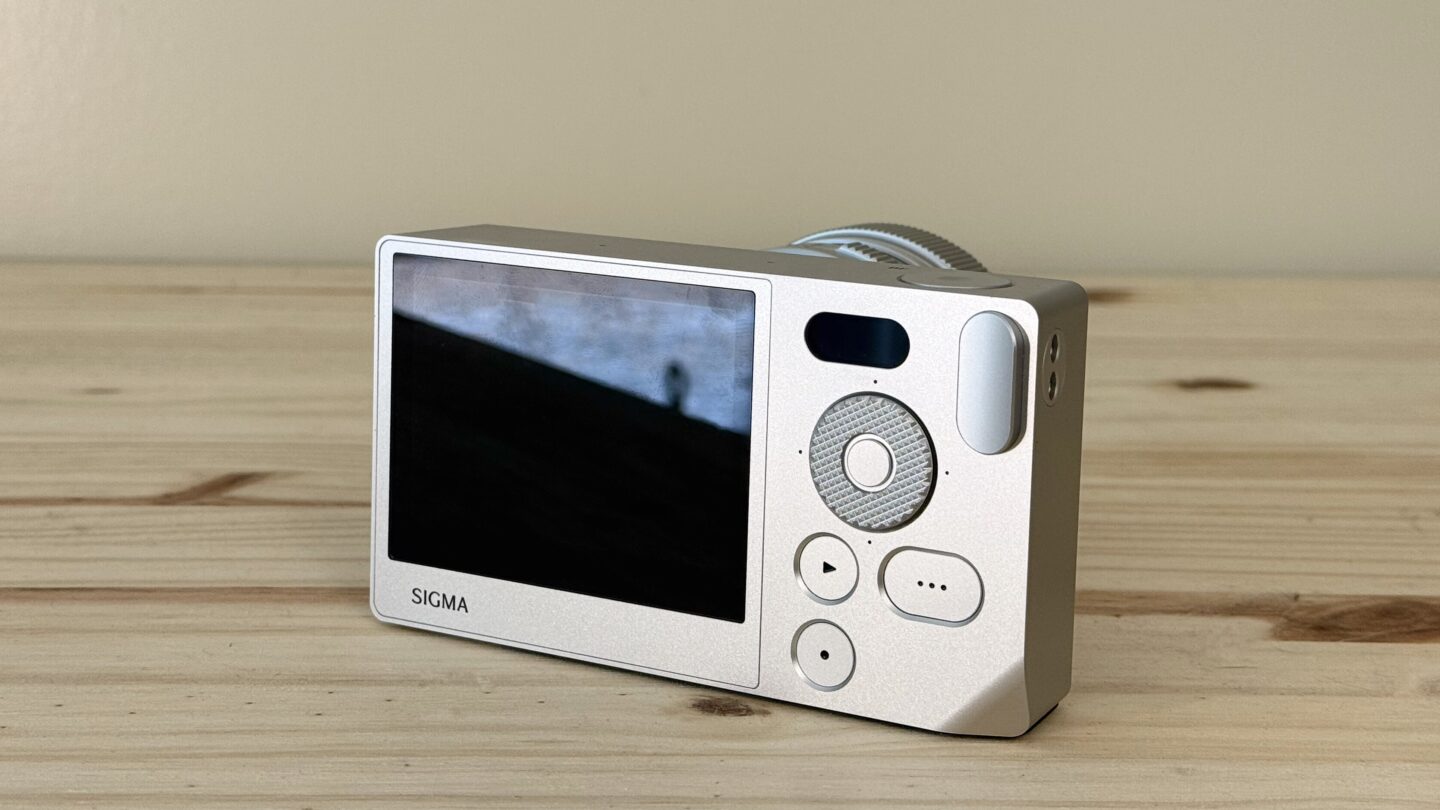
Photo: D. Griffin Jones/Cult of Mac
In pursuit of its radically simple design, the Sigma BF sacrifices many traditional camera elements.
- The screen doesn’t flip out and the camera doesn’t have an optical viewfinder. The display is bright enough for me to see on a clear and sunny day, but only just — you might have trouble seeing it if your eyesight isn’t perfect.
- There’s no cold shoe mount for attaching a camera flash or microphone. If those are must-haves, you’ll need to mount the Sigma BF to some sort of cage that adds those.
- There’s no SD card slot. You take pictures and videos on the built-in 230GB internal storage, and that’s it. You plug it in over USB-C. For me, this is an advantage. It proves freeing not to hassle with swapping and formatting cards through a clunky interface.
- While the camera sports a standard tripod mount on the bottom, it offers only one attachment for a camera strap on the right, not the left or bottom. That limits the types of straps you can use.
- It doesn’t tag your photos with location data, so you must add it by hand if you care about such things.
A few miscellaneous observations:
- The speakers aren’t terribly loud, but again, this isn’t really a video camera.
- The battery life is somewhat unimpressive. Swapping batteries is incredibly simple and fast, but the battery drains pretty quickly while shooting.
- The focus and aperture dials, much like the shifter in a modern automatic car, are a blend of physical and digital controls. They’re not directly and mechanically linked to anything. In Automatic mode, you can spin them all you want and the camera will ignore it. In Manual mode, there’s a slight latency.
Sigma BF review: Conclusion
As smartphone cameras get better and more capable every year, full-size dedicated cameras need to lean into what differentiates them to stay relevant. As Steve Jobs said, if a product category isn’t markedly better at anything, then it has no reason to exist.
The Sigma BF is a camera distilled down to the joy of photography. Other full-frame cameras overcorrect on physical controls, leaving you swimming in dials and buttons; learning how to use them feels like studying for the SAT. The Sigma BF gives you everything you need to have fun taking beautiful photos. Every dial and button helps you take pictures and feel good doing it. And there’s nothing else.
Your smartphone is more convenient for quick snapshots. And other cameras are more advanced. But the Sigma BF is truly one of a kind.
★★★★☆
Price
The Sigma BF costs $1,999 for the camera body, in either silver or black. The recommended lens is the Sigma 50mm F2 DG, also available in silver or black, for $639. The retail version comes with a lens hood, which my loaned unit did not include.
Both should become available from B&H Photo/Video on April 25, 2025, with preorders open now.
Buy from: B&H Photo/Video
Beautiful and fun to use
Sigma BF Mirrorless Camera
4.0
This beautiful camera is as easy to use as a consumer point-and-shoot, while its full-frame sensor takes stunning professional photos.
- Gorgeous aluminum design
- Excellent build quality
- Full-frame 24MP sensor
- Simple controls
- Non-flippable screen
- Shaky handheld video
Sigma loaned Cult of Mac a Sigma BF review unit for this article. See our reviews policy, and check out more in-depth reviews of Apple-related items.

